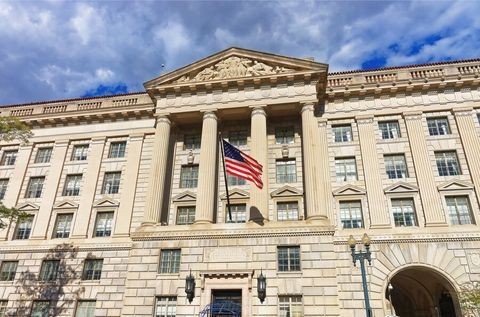New UK subsidy control regime designed to provide quicker and more flexible support to UK businesses
Client Alert | 5 min read | 07.06.21
On 30 June 2021, the UK Department for Business, Energy and Industrial Strategy (BEIS) outlined its plans for a new state subsidy regime, now that the UK is no longer bound by the State Aid rules of the European Union (see here). The UK is obliged by its commitments under the UK-EU Trade and Cooperation Agreement (TCA), as well as the World Trade Organization (WTO) rules on subsidies, to maintain some form of subsidy control.However, in contrast to the EU regime, the proposed new UK system starts from the position that subsidies are permitted if they are in line with certain subsidy control principles, with no need to obtain any formal approval before granting the subsidy.
The regime applies to subsidies offered by all public authorities in the UK including regional and local authorities and the central and devolved administrations.The regime will come into effect in 2022, parliamentary approval allowing.Before that, BEIS will publish guidance to provide more detail on how the regime will operate in practice. The European Commission is expected to scrutinize the proposal to ensure compliance with the TCA.
Some of the key elements of the new regime:
- if a public authority considers that aid is consistent with the subsidy control principles, there will be no need to make a referral request to the Competition and Markets Authority (CMA) for most categories of aid. It will be for the granting authority to determine whether or not there is compliance with the principles; although, in most cases, the beneficiaries will also want to be clear that the aid is awarded properly (rather than risk having to repay it). The subsidy control principles reflect the substantive principles provided for in the TCA and include the principles of proportionality, necessity and incentive effect;
- some subsidies will always be exempt: essentially those under certain thresholds, as well as certain subsidies in response to economic emergencies or natural disasters;
- to protect UK competition and investment and to minimize distortions from specific subsidies, there will be a specific category of subsidy that are subject to mandatory pre-award referral to the CMA.These are referred to as “Subsidies of Particular Interest” and may only be granted after the public authority has submitted a referral request to the CMA and the mandatory referral process has concluded; the CMA’s report assessing compliance with the principles is non-binding but if the public authority does not take the CMA’s findings into account it may be exposed to the risk of judicial review (see below). Another special category of subsidies, so-called “Subsidies of Interest”, will be subject to a voluntary referral regime.
- certain types of aid are prohibited, such as subsidies that result in the relocation of jobs and economic activity from one part of the UK to another, effectively where public authorities are competing to attract the same businesses to their region.The Government wants to avoid these “subsidy races”; but rather wants the new regime to contribute to strengthening the Union and leveling up the entire economy;
- also prohibited will be unlimited government guarantees to businesses, as well as subsidies granted to ailing or insolvent enterprises where there is no credible restructuring plan.
A new Subsidy Advice Unit within the CMA will be responsible for administering the system, providing non-binding advice to granting authorities and carrying out monitoring and reporting in relation to the new regime.But the CMA will have no role with regard to enforcement of the regime, with jurisdiction to review the award of subsidies being put in the hands of the Competition Appeal Tribunal (CAT). Interested parties such as competitors to the beneficiary can apply to the CAT for the review of a decision to give a subsidy or to make a subsidy scheme. The CAT will apply a judicial review standard, meaning that it will not look at whether the granting authority made the right decision, but only whether that decision was illegal, procedurally unfair or irrational.The CAT has the power to make a recovery order if it finds that the subsidy was granted in contravention of the subsidy control principles.
The Government announcement accompanying the new proposal makes a lot of the fact that the UK is able to put this regime in place because it is no longer part of the EU, where decisions on aid had to undergo a “lengthy bureaucratic process”, wade through “burdensome red tape” and manage “restrictive EU definitions which unfairly penalized starts-ups and small businesses” in order to seek approval by “unelected EU bureaucrats”—which would all result in “delaying vital funds from reaching viable businesses in good time”.The new regime is intended to facilitate support for key domestic priorities, such as leveling up economic growth across the UK and driving a green industrial revolution.
The Government has been at pains to stress that there is no intention to go back to the situation in the 1970s where the state intervened heavily in UK businesses, effectively taking a role in running the economy, by picking and backing “winners” (not always successfully) and bailing out failing and unsustainable companies.
It is clearly the case that a simpler, quicker and more flexible system of state subsidies is to be welcomed.Inevitably, however, as with any new system, there will be some uncertainty initially about how the rules will work in practice: what is the exact scope of the principles; to what extent will the concept of aid be the same as that under EU law (such that EU law on interpreting that concept may be relevant)? Another important question will be how broadly the category of “Subsidies of Particular Interest” that are subject to mandatory referral to the CMA will be defined by the Secretary of State. Those questions will be resolved in time, through practice and case law from the CAT.Until then, granting authorities and potential beneficiaries will need to navigate their own way through that uncertainty.
Insights
Client Alert | 4 min read | 09.20.24
Department of Commerce Unveils New Tool to Inform Supply Chain Risk Mitigation
The U.S. Department of Commerce unveiled a groundbreaking analytic risk assessment tool to inform the U.S. government’s efforts in mitigating supply chain risks. Launched at the inaugural Supply Chain Summit hosted by the Department of Commerce and the Council on Foreign Relations on September 10, 2024, the SCALE Tool marks a significant milestone in the U.S. government’s broader commitment to strengthening the U.S. supply chain ecosystem.
Client Alert | 3 min read | 09.13.24
Client Alert | 12 min read | 09.13.24
Tri-Agencies Finalize NQTL Comparative Analysis Standards in Final Rule
Client Alert | 5 min read | 09.11.24




